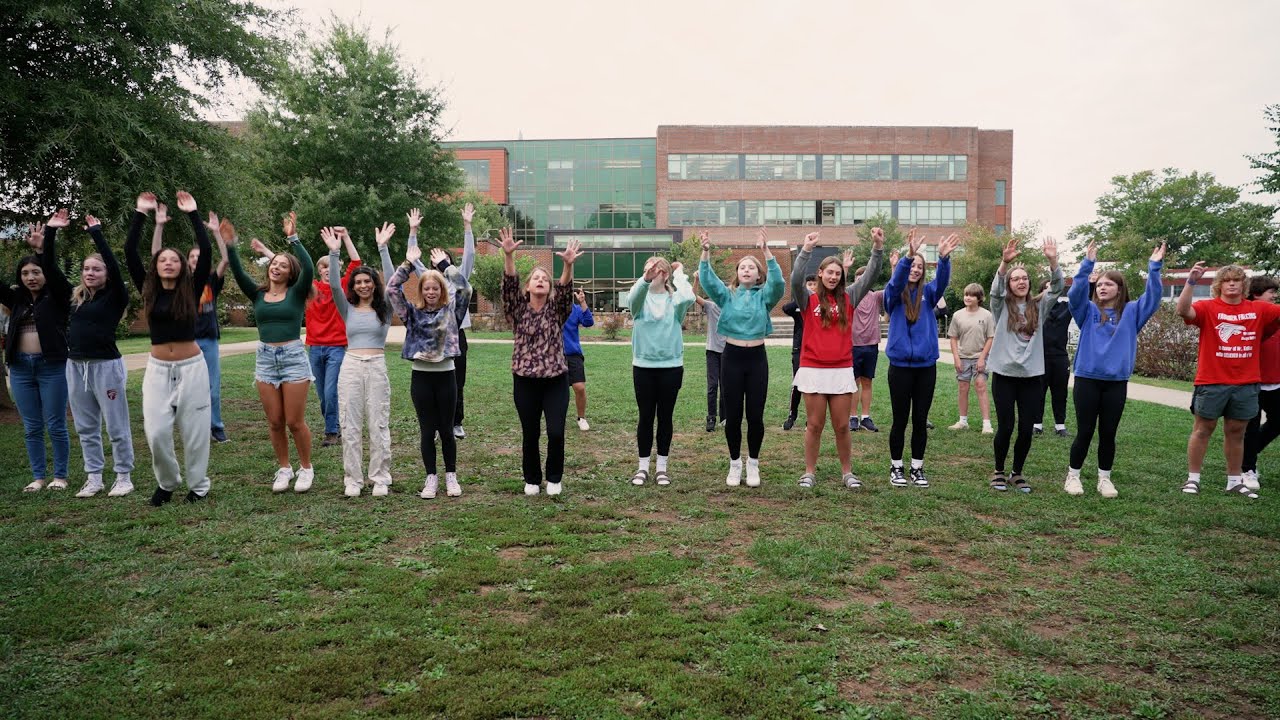During this summer, a team of students from MIT embarked on a journey to the sou …
Sparking Academic Learning Through Movement and Dance
Jennifer Livingstone

French teacher Nicole Goepper is well-known for dancing with her students in the school courtyard. However, even inside the walls of her classroom at Fauquier High School in Northern Virginia, the students are actively engaged.
“I strongly believe that there is a connection in our brains that associates words with movement,” says Goepper, who cites research indicating that movement helps solidify recall and improve mood, thus enhancing students’ well-being. Goepper witnessed this firsthand when she noticed a decline in student mental health after the pandemic.
Goepper incorporates movement whenever possible, whether it be using gestures to teach new vocabulary, acting out French accent marks, or the pièce de résistance: dancing outside.
“Usually, we dance in the midst of a class. I use it as a reward for something we’ve accomplished in class [students get to choose which French pop songs they want to dance to], and I also use it as a transition,” explains Goepper.
What are the benefits? “It provides a brain break; it gets them moving, raises their heart rate, and promotes blood flow to the brain. It acts as a primer, preparing them to learn more [when they go back inside],” she explains.
However, it’s not just about physical activity. The dancing also serves as a cultural connection, which holds significant value when learning a world language. When introducing a new song, Goepper ensures that students learn about the singer, their background, and the overall meaning behind the song. This helps students understand the song’s relevance to French and French diaspora culture.
Despite the well-established notion that movement benefits younger students, Goepper firmly believes it is just as advantageous for high schoolers. “In the beginning, there are students who hesitate to participate,” admits Goepper. “But once they realize how fun it is, they feel left out if they don’t join in with us. I manage to win over 99% of them.”
For more ideas on incorporating movement into learning, read the article “More Than a Dozen Ways to Build Movement Into Learning” by Sarah Gonser and Stephen Merrill for Edutopia. To delve deeper into the research on movement and learning, explore the resources provided below.
– Christian Andrä, Brian Mathias, Anika Schwager, Manuela Macedonia & Katharina von Kriegstein’s research on how gestures and pictures aid in foreign language vocabulary retention for school children (2020)
– Lawrence Shapiro and Steven Stolz’s comprehensive review of studies on embodied cognition (2019)
– Panagiotis Kosmas, Andri Ioannou, and Panayiotis Zaphiris’s study on embodied learning and its impact on children’s memory and language skills (2019)
– Spyridoula Vazou, Panagiota Gavrilou, Evangelia Mamalaki, Anna Papanastasiou, and Nefeli Sioumala’s research on the integration of physical activity and its influence on academic motivation (2012)
– Christopher R. Madan and Anthony Singhal’s article on using actions to enhance memory (2012)

